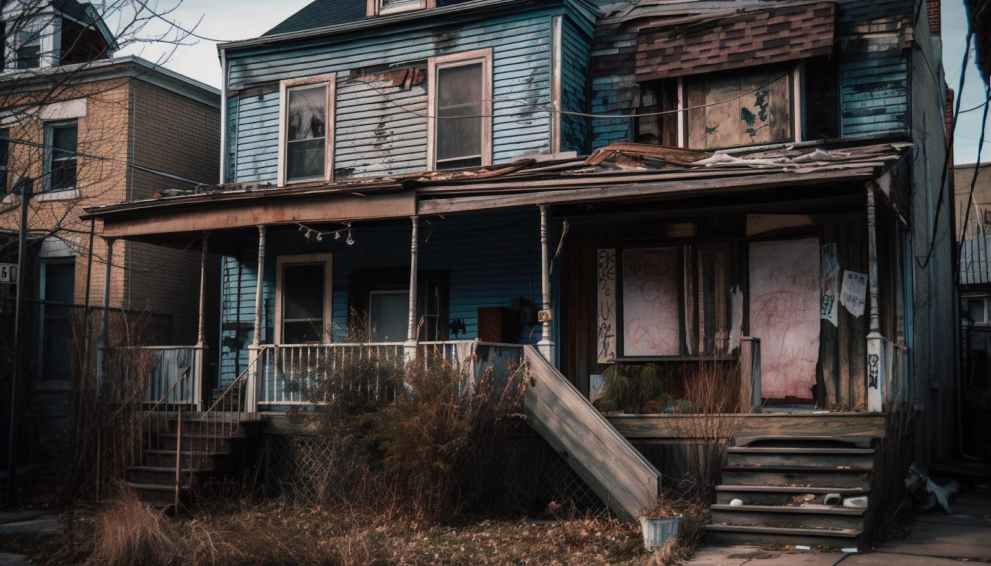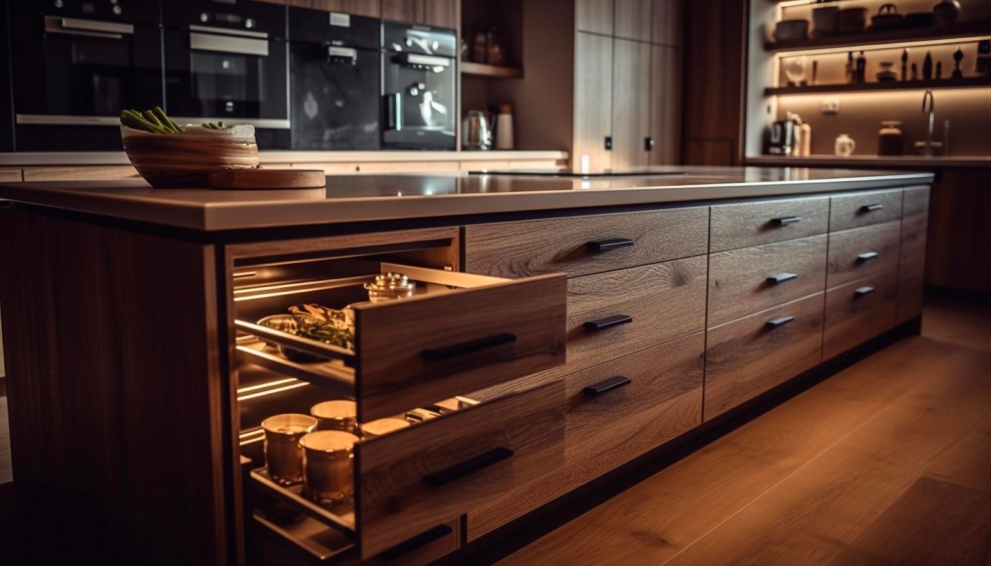Do not fix these 10 things when you sell your house
Don’t fix these 10 things when selling your house in Chicago, Illinois, to get the maximum net effective price for your house.
- Normal wear and tear
- Minor electrical issues not posing safety hazards
- Hairline cracks in driveways or walkways
- Partial upgrades to bathrooms or kitchens
- Old appliances that are still functional
- Windows and accessories
- Outdated detachable fixtures, furniture, and art
- Grandfathered in building code issues
- Trendy upgrades
- Replacing broken items with trending styles
When selling a house in Illinois, you don’t need to worry about fixing minor cosmetic issues like small paint chips or scratches on the walls. Similarly, you don’t need to repair minor plumbing or electrical problems unless they pose safety hazards.
In my years as a real estate attorney in Illinois, I’ve seen sellers make the mistake of over-improving their homes.
In fact, I’m convinced every seller’s mantra should be “FIX LESS!” and everyone could use a little insight into what not to fix when selling a house.
Your house is an investment. The idea is to get the most returns on it that you can and not drain your savings on unnecessary repairs.

Common Misconceptions About Home Renovations and Returns on Investment
Not every repair is worth the time or money.
- The average homeowner might think fixing everything will fetch top dollar.
- Many believe new appliances or a major renovation are deal breakers for potential buyers.
But here’s the truth: Most buyers seek value for their money. They understand normal wear and tear and don’t think every electrical issue is a big deal.

According to the National Association of Realtors, 70% of potential buyers are willing to compromise on home repairs if the house is in their desired location.
What does that tell you?
The current market conditions and location are more critical than a new cabinet hardware set.
What Not To Fix When Selling a House (The Do-Not-Fix List)
Navigating the process of selling a house can be pretty overwhelming, especially when you’re faced with deciding which repairs and upgrades to tackle.
Differentiate between the absolutely necessary fixes and those that won’t give you much investment return.
Here’s a more detailed guide to help you figure out what to fix when selling:

The Do-Not-Fix List
Evaluating Repairs: To Fix or Not to Fix?
Time is of the essence.
Sometimes the repairs you think are necessary will only delay the selling process without adding any substantial value. The longer your home is on the market, the more it will cost you.

I remember a client who decided to redo all the plumbing in the house. It took 3 extra months to put it on the market, and did they make more money?
Not a single penny extra.
Evaluate the potential return on investment for repairs before committing.
How long it takes for a house to sell can vary due to factors such as location, price, and market conditions. Typically, houses stay on the market for a few weeks to a few months.
On the other hand, the average time to close on a house usually is about 30 to 45 days from accepting an offer to the final closing date.
These timelines may differ based on individual circumstances and negotiations between buyers and sellers. If you’re selling your house for sale by owner (FSBO), the time to close on a house can vary even further based on how fast the seller completes the paperwork for selling a house by owner.
When Over-Improvement Can Be a Waste of Money
Unfortunately, your personal taste might not resonate with your buyers’.

You might adore the Mexican tiles on your kitchen floor; others might think they’re too loud. If your house is the only one on the block with a 3-car garage, it won’t match the neighborhood standards.
Questions to Ask Yourself to Decide What Not to Fix:
- Will this repair add substantial value to my house?
- Is this repair likely to prolong my home-selling process?
- Is this repair worth the asking price?
- Will a potential buyer even notice this repair?
- Is this repair in line with the current market trends and neighborhood standards?
What to Fix When Selling a House in Chicago (7 Things)
On the other hand, let’s look at repairs that can significantly impact the sale of your home in Cook County or Chicagoland if fixed before the sale.
1. Addressing Major Issues

Major issues such as leaky roofs, foundation problems and outdated electrical systems can be a deal breaker for many buyers.
If your home has these problems, addressing them should be a priority. Fixing these issues could prevent a potential buyer from walking away and helps you avoid potential legal issues.
2. Safety Issues

Safety should always be a top concern. Issues like mold, asbestos, or radon gas can pose serious health risks. If your home has any of these problems, hiring a professional to fix them is crucial.
Safety issues can also come up during a home inspection, and dealing with them proactively can help smooth the selling process.
3. Light Landscaping for Improved Curb Appeal

First impressions matter, and the exterior of your home is the first thing a prospective buyer sees.
Light landscaping, such as mowing the lawn, trimming overgrown bushes and adding a few flower pots, can significantly increase curb appeal.
4. Neutral Paint Colors for Broad Appeal

While you might love your bright red kitchen, it might not appeal to most buyers.
Painting your home in neutral colors can help potential buyers visualize themselves in the space. Plus, a fresh coat of paint can make your home look clean and well-maintained.
5. Fixing Glaringly Broken Essential Items

Essential items like HVAC systems and water heaters play a significant role in a home’s functionality. If these items are broken, it’s worth fixing or replacing them.
This makes your home more appealing to buyers and prevents potential negotiation issues during the sale process.
6. Replacing Outdated Light Fixtures and Fans

Outdated light fixtures and fans can make your home look sad.
Replacing them with modern, energy-efficient options can give your home a fresh, updated look. Energy efficiency is also a selling point that many buyers appreciate.
7. Cosmetic Fixes for a Better Overall Appeal

Finally, don’t underestimate the power of fixing cosmetic flaws.
Simple updates like replacing old cabinet hardware, fixing minor cracks in walls, or re-caulking the bathroom can make a big difference in how your home is perceived.
Showcasing Potential, Not Perfection
Your goal should be to showcase your house’s potential, not to make it perfect. This is where staging comes in.
Staging involves arranging furniture and decor to highlight your house’s strengths and downplay its weaknesses. It can help potential buyers visualize themselves living in the space.
Strike a balance between creating an appealing space and leaving some room for potential buyers to imagine how they would personalize it.

- The Cozy Living Room:
- Instead of completely filling the living room walls with family photos and artwork, you can create a focal point by hanging a collection of well-curated pieces on one wall while leaving the opposite wall blank.
- This would allow buyers to envision their own art or statement piece in that space.
- By striking this balance, you showcase your style while allowing buyers to visualize how they can personalize the room.
- The Elegant Dining Area:
- Rather than overcrowding the dining area with elaborate table settings and decorations, consider setting the table with a simple yet sophisticated centerpiece that complements the space’s overall aesthetic.
- Leaving some empty spaces on the buffet or sideboard allows prospective buyers to imagine how they would personalize it during special occasions or holidays.
- This way, you create an inviting atmosphere while still leaving room for their creativity.

How Real Estate Agents Can Help You
An experienced real estate agent is your guiding light. They’ll bring in market insights, tell you what comparable homes are selling for, and advise you on the repairs that make the most sense.
Don’t be a lone ranger. Seek expert advice.

Your local real estate agent can provide a Comparative Market Analysis (CMA) to understand market conditions and necessary repairs.
A Realtor will also know which items on the home inspection report will most likely be deal breakers for prospective buyers.
Frequently Asked Questions
Conclusion

Your energy, time, and resources are precious. Don’t waste them on efforts that won’t yield returns.
In the real estate world, it’s not just what you do, but also what you choose not to do that counts.
- Engage an experienced real estate professional, prioritize your to-do list and focus on repairs that attract buyers.
That’s the magic recipe for getting your house off the market efficiently and profitably.
Remember: Show potential, not perfection, and let the beauty of your home speak for itself.











